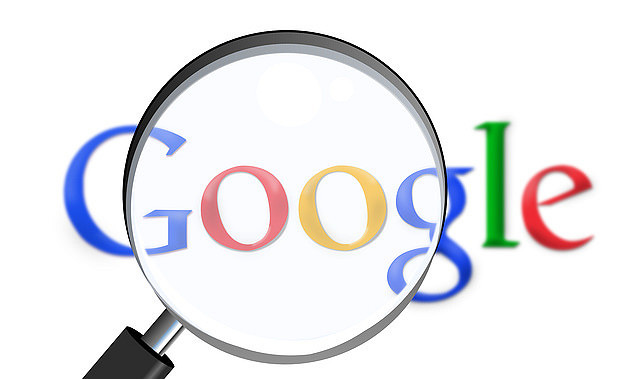Every organisation on the Fortune 500 has a strategic business direction. This is because understanding where your company is heading is one of the main crucial factors for success.
Business direction is planning for both the long and short term. It is marking out where your business is heading by forming a vision. It then assesses what you have to do to get there in the mission. Whereby, you set goals and overall, highlights gaps and opportunities for future growth.
In this article, I will show you how to plan your business direction to remain or be the leading business in that market.
1. What Is Business Direction?
Business direction outlines where your business is heading, and forming a clear path to meet long term and short terms goals.
2. Why Is Knowing Your Direction Important?
It is important to understand that we are not the only organisation out there competing for market share. In any ecosystem, you will have surrounding competitors that replicate your business model, and do it a far more efficiently.
If we remain complacent for enough time competing products and services will replace your business in the industry. In addition, the surrounding competitors in our ecosystem alter the fabric of our customer’s desires in a constant changing environment.
To keep up to date in today’s society you strive for new innovative ways of solving target customer related problems better than the competition, and you do this by outlining a clear long term and short-term goals for our business.
3. Gap Analysis
To further understand how to justify your direction you need to look for gaps in the market. To successfully conduct a gap analysis it is important to know what customers you are dealing with and understand what their wants and needs are. As well as, looking at the surrounding environment in which you operate.
There are two main approaches to doing this;
- Market research, and
- Industry analysis
We conduct market research to understand the wants and needs of your customers. The we collect this information by customer service complaints, speaking to customers by interviews and, or questionnaire or assessing purchasing behaviour from previous sales/marketing data.
Industry analysis captures key messages and branding to understand where it is they are heading, and a GAP analysis outlines the key orientation where the business should be positioned.
Together, by understanding your ideal customers and the direction of your competitors you can look for gaps in the market. These gaps are usually discovered by outlining what the competition is failing to provide.
The more we understand about our customer wants and needs, and better insight into trends and purchasing behaviours the more we understand into the future and the more accurate our direction will be.
4. Tools To Establish Business Direction
To establish a clear direction you can do this is a tactical way, by using certain tools.
We use vision, mission and goals to collaborate knowledge to ensure our business is on the right path.
The reason we use these tools are we are more clearly able to communicate between our stakeholders.
When we can communicate clearly of our direction across all departments then the employers know the heading.
If the direction is not clear then departs by default will create their own.
If the directions are all different, the business will rupture and fail.
5. Vision
When on any journey it is important to know where we are heading.
The vision is the Holy Grail, or the place of paradise that will make our customer desire our product and services.
More formally, it is a message that describes the state of an organisation that truly adheres to the target customers wants and needs.
The description will cover the solution that you offer to your customers.
Obviously, this solution has to be better than any competing business in the industry.
Team based sport coaches and captains are successful at establishing vision is the team they are responsible for.
Their success comes in being able to reiterate the same vision in the mind of each team member, they truly articulate the understanding not only where the heading is, but also the reasoning for going there.
In a business scenario, it gives employees a clear focus on how the company intends to appeal in the near future.
5.1 Vision Statement
We introduce the vision statement to all the other stakeholders of your business.
This is the message used to communicate they intended heading of what the business will grow into.
It provides strategists and managers with direction and sense of purpose because it outlines in between one and two sentences the utopia for the target customers in a very simple and clear manner.
5.2 Benefits from having a vision, include:
- Creating a visual environment to which the business will be operating on in the near future. By planning to reach the vision, the plan will account for solutions to barriers should they occur.
- Outline the status of the organisation, coming up with justification where it sits the market and the reasoning behind.
- Sharing of a common goal by the team brings about cohesion in order to achieve the vision imprinted by the organisation.
- It helps an organisation decision-making process by comparing decisions against the vision making them move in the direction of the vision.
- Vision creates empowerment through learning of the operating environment and individual capabilities that enable growth and transformation.
5.3 Envision
With the introduction of the digital age, the system we live in is rapidly changing because of innovation.
The process of reassessing the vision should be carried out more regularly as new technologies and invention are happening daily.
To be more successful we need to think of new strategies to align with the changing environment.
Envision, is the term used to reassess and make constant tweaks to the vision whenever we learn something new about our ecosystem.
6. Mission
Just having the vision is not enough for our business direction.
We further need to devise a way of reaching the vision, which is contained within the mission.
The mission clearly outlines the set of requirement to reach the vision.
The mission is the compass.
It is the over-arching, top-level tasks, which gear a business towards the Vision.
The Mission outlines what the organisation is and what it has to do to accomplish the vision.
6.1 Mission Statement
Just like vision, we communicate how to reach our vision with a mission statement.
For a mission statement to be effective, it has to clearly define:
- What your business is
- The target market it intends to serve
The statement outlines how the objective to better serve your customers, what benefits society stands to gain from the operations.
I have regularly seen Mission statements that are uncompromising and ambitious rather than simple and easy to interpret.
When linked to the vision, it offers the company direction.
7. Goals
We set goals are the way to measure the performance, confirming the mission and vision is successful.
In addition, goals are objectives, whereby baselines are set from previous data and aims are established.
Once we have devised a way of reaching the vision in the mission we need to confirm the direction is satisfactory toward the future success of the organisation.
This is because every strategist should confirm the set path of the vision and mission by seeking for better results.
However, not only do goals need to align with the vision and mission.
7.1 Key Performance Indicators (KPI’S)
The variables need to be carefully thought-out whereby we set Key performance indicators.
These provide proof that our direction is successful.
However, it is common to see organisation KPI has set in the strategy is not related to organisation Vision and Mission.
These aims are measured through Key Performance Indicators (KPI’s), which are mostly short term but effects extend into the long-term plan of the organisation.
As discussed the variables for the KPI’S need to be carefully justified. But, they need to reflect accomplishments in terms of market share, growth, margin and profitability.
7.2 SMART Goals
When setting goals, they ought to be SMART (specific, measurable, attainable, relevant and timely) in order to get desirable outcomes.
The SMART goals help ensure the KPI’S that are set are carefully outlined and aligned with the Vision Mission and can help form the Strategy.
Benefits of setting goals
- Goals help an organisation improve employee collaboration through team work and enable them to gauge their progress to see how their efforts are having an impact to the business.
- It also gives them a sense of ownership through participating and giving their input towards set out tasks therefore, they embody the business and help it grow.
- Since goals are more employees centred, it shows the organisation priorities and helps in establishing time management during the tasks.
- They provide control of the working environment and of the future, through laying down tasks for operation.
- Employee satisfaction through accomplishments of tasks as desired and short term wins for motivation.
- One is able to prioritise tasks and eliminate those tasks that would have been carried out without the insight of the goals. Therefore saving time and effort wasted working on unnecessary task
- Overall, provides insight into forming a more detailed actions that are formulated into the strategy
Conclusion
Communication is important within an organisation, and a part of communication in an organisation is the terminology we use.
As discussed vision is the final destination, or ideal state the organisation needs to be at to serve its customers.
The mission can be described as the compass; it is the general objectives set out to achieve the vision.
The goals is the time for arrival, it contains the KPI’s that monitors to achieve the mission. Goals are set tasks to be accomplished in order to achieve the mission of the organisation and work towards the vision.
Together, mission and vision, help communicate the organisations purpose to stakeholders, and inform the goals and objectives set to determine whether the strategy is on track.





